Whether it be from MountVesuvius or director Paul W.S. Anderson, most of us associate the word Pompeii with disaster. But while the deadly volcanic blast of 79 a.d. was the most memorable aspect of this doomed civilization, it was still just a single moment in the history of this Italian city. Today, we're looking at things you probably didn't know about Pompeii. So how much do we really know about the daily life of Pompeii? And just how devastating was the big blast that ended it all?
The City Was An Upper-Class Holiday Destination (for sex)
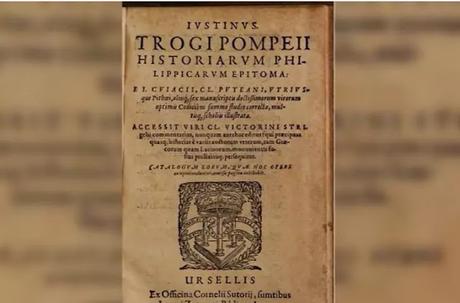
At only a few hundred miles from the heavily populated Rome, Pompeii served as a favored summer destination for wealthy citizens looking for an extravagant vacation. The city was far less dense than its Roman neighbor and featured many tourist attractions, such as a large amphitheater, as well as a commercial center featuring bathhouses and shops.
Think of it as the peaceful island in the film Jaws, except with a murderous volcano instead of a shark. And also sex, lots and lots of sex. It wouldn't be a true ancient Roman destination without an absolute plethora of brothels, something excavations have long confirmed.
The largest and most visited example is known as the Lupanar. Located in the center of the city, archeologists were able to identify a layout consisting of small cubicles each equipped with a masonry bed. Along with this pretty obvious sign of sex work, the main building also featured an erotic menu on its walls describing not only a list of explicit acts but prices for them as well.
In fact, the entire city was a mecca for fornication. As many of the buildings outside of the brothel were found to feature similar erotic art, making this more like Amsterdam than a family destination. And speaking of street art.
The Wall Art Teaches Us a Lot About Pompeiin Culture

If you think graffiti is a modern invention, then you've clearly never seen the hooligan antics of caveman civilizations. We've been crudely marking our territory since the dawn of man, Pompeii is no different.
Modern visitors of the scorch landmark can still enjoy the wall humor of centuries past, including that still preserved proclamation of, "Myrtis, you suck well" found scrawled on one of the city's brothel walls. Turns out that even after several millennia, sex humor doesn't change one bit. But it's not all ancient oral sex recommendations and brothel rates.
While there's little written evidence of pre-eruption Pompeii, many detailed and well-preserved frescoes on the city walls shed some light on the civilization. One of the more prominent examples is the difference in skin tone portrayed between men and women, the former being golden bronze, while the latter appearing in lighter tones while gilded with jewelry and among fancy furnishings.
According to scholars, this dramatic difference indicates that women had a higher rank than their male counterparts. Their pale skin a sign of indoor living and luxury.
The Citizen Of Pompeii Had No Clue What Their Volcano Was

Originating from Vulcan, the Roman god of fire, the word volcano wasn't invented until Mount Etna's eruption in the 1600s. Before that, the people of Pompeii had no formal definition for the impending destructor of their city.
It's probably no surprise to hear that there was an abundance of warning signs leading up to the eruption of the Vesuvius, all of which were ignored by the unaware inhabitants below. For starters, a massive earthquake hit the mountain a few decades before, something that locals failed to connect to the possibility of an eruption.
Additionally, underground springs began drying up and fish from the Sarno River began to die due to the heavy, acidity in the water. In other words, had the citizens of Pompeii been even a little bit familiar with these warning signs, we probably would know this as one of the biggest near misses of history. But that's not the only oversight that plagues Pompeii.
The Discovery of Pompeii Was Marked By Error
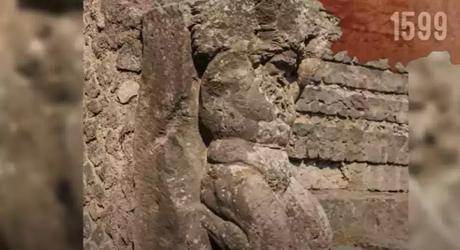
You would imagine that the discovery of an ancient and apocalyptic burial ground would immediately pop for anyone who came upon it, but that actually wasn't the case for Pompeii. The first remnants were found by a crew of workers in 1599, initially in the form of wall frescoes coupled with an inscription flat out naming the buried city beneath them.
Amazingly, this wouldn't lead to full discovery. The small hint of ruins was examined by the Italian architect, Domenico Fontana, who failed to identify the presence of a city below the site. It was then abandoned for another 150 years before the King of Naples, Charles of Bourbon, finally ordered an excavation in the late 1740s.
Never send an architect to do an archaeologist job. Amazingly, this would not be the final flub in the founding of Pompeii. In October of 2018, scientists discovered an overlooked and crucial piece of evidence. Specifically, a date is written in charcoal marking two months after the assumed eruption date of August 24th, 79 a.d.
Considering how fragile charcoal writing is, archaeologists now speculate that this is highly probable that the city was destroyed slightly later than originally believed. Is it the most exciting discovery? Maybe not, unless you happen to be a hardcore Pompeii fanatic. Which, who isn't?
The City Grizzly Demise Was Also What Preserved It
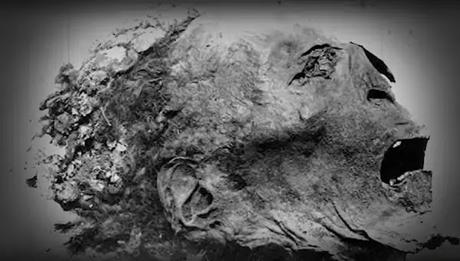
While it's commonly accepted that the citizens of Pompeii died from suffocation due to ash, new studies suggest that this is actually false. In reality, the population of this doom metropolis met death at the hands of the extreme heat from the blast. Killing them instantly with exposure to temperatures far over 1,000 degrees.
Well, that sounds like a literal hell on Earth. The grotesque upside was that the blanket of ash and searing gas is also the reason that Pompeii's victims and culture were seemingly untouched and preserved for over 2000 years.
Amazingly, this process preserved the terrified bodies better than any modern method of embalming. So we guess the lesson here is that if you wish to immortalize yourself long after your death, there's no better method than living near an angry volcano.
Macabre Detail in The Rubble
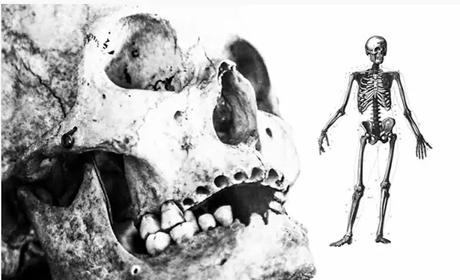
The aforementioned preservation of countless ash consumed victims is undoubtedly the most famous aspect of the Pompeii disaster. It also yielded countless macabre vignettes detailing the final and personal moments of the city's inhabitants.
One such story comes from the discovery of a man who managed to flee the initial eruption, only to be thwarted soon after. And by thwarted, we mean he was seemingly crushed by a gigantic hot flying rock. The stone speculated as the lining of a door was jettisoned through the air by the volcano's pyroclastic flow.
From there it landed squarely on the head of our unlucky escapee. And while you may think that this is what did him in, the discovered truth turned out to be far more surprising and even more grisly. After further investigation, it was later revealed that the skull of the victim was intact, meaning that he was merely trapped and later killed by the heat and ash.
To make matters worse, lesions found on the bones led scientists to believe he was already suffering from an infection that inhibited his movement. Talk about bad luck. But it's not all gloom. One surprising discovery happened when archaeologists took a closer look at the victim's teeth.
By using multi-layer CT scans on the skeletons, scientists found near-perfect chompers on the 3D reconstructions of the bodies. Their exemplary dental work was thanks to a combination of a diet of fruit and vegetables, coupled with an extremely high level of fluorine existing around the volcano.
Pompeii Wasn't The Deadliest Eruption, But...
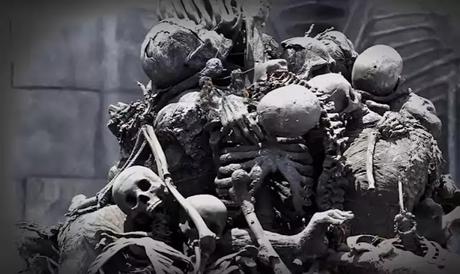
While historians disagree on the exact total of casualties, some estimate the body count at Pompeii to be roughly 30,000. While this seems like an ungodly amount, it's not nearly the most deadly eruption in the history of volcanoes.
Out of the top five deadliest eruptions, the city of Pompeii doesn't even make the cut. The winner being the lesser-known 1815 eruption of Mount Tambora in Indonesia, which claimed the lives of 80,000 people. So why do we remember Pompeii so well?
Most likely because of the terrifying aftermath so carefully preserved by nature. No clearer picture of desperation and terror has been found quite like the city of Pompeii. The bodies, many still being discovered, depict a futile attempt to escape the inevitable.
One of the saddest examples being a 1990 discovery that many of the citizens attempted to use their tunics as masks to ward off the sulfurous air. There's even a single firsthand account of the devastation written by one of the few witnesses of the eruption in a letter between Pliny the younger two Cornelius Tacitus.
The aftermath was described as," a dense black cloud spreading over the earth like a flood accompanied by the shrieks of women, wailing of infants, and the shouting of men." The emotional account goes on with Younger recounting that, "some prayed for death in their terror of dying and that many beseeched the aid of the gods, but still more imagined there were no gods left and that the universe was plunged into eternal darkness forevermore."
Just imagine having no knowledge of volcanoes and witnessing what was surely the end of all times. This is the whore internalized by the city of Pompeii. And yet, it's not the scariest detail of this disaster.
Mount Vesuvius, a landmark towering at 4,200 feet, remains the only active volcano on mainland Europe and has erupted over 50 times that we're aware of. Today, it is surrounded by over three million people, making it one of the most dangerous volcanoes due to the potential consequences of another eruption.
In other words, there's no saying if the events of 79 a.d. will be the final tragedy to befall Pompeii. But there's no harm in crossing our fingers, right? What do you think is your worst case, natural disaster scenario? Let us know in our comments below.

